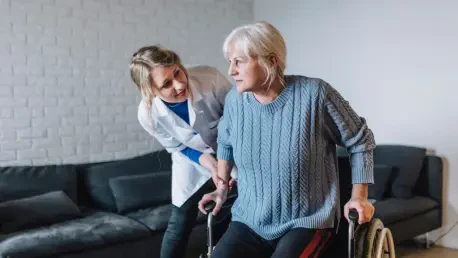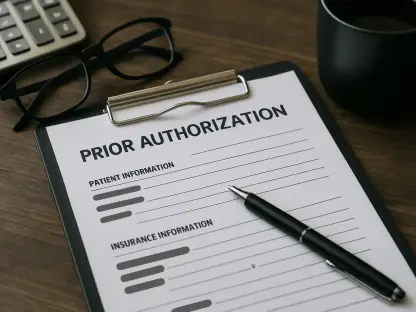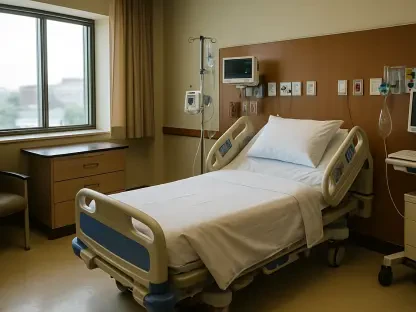South Dakota is facing a pivotal moment in elder care as it confronts a rapidly aging population, a trend projected to result in nearly 20% of the state’s population being 65 or older within ten years. The dual challenge of delivering compassionate care while maintaining fiscal responsibility presents profound implications for the state’s social and economic fabric. At the heart of this issue is the need to devise comprehensive strategies that meet the growing demands of elder care while honoring the dignity and independence of seniors. Balancing these considerations is critical as the state prepares to address the imminent population shift, influencing how public and private resources are allocated and utilized to support the elderly community.
Financial Challenges and Current Systems
The financial impact of elder care in South Dakota is stark, with the average cost of nursing home care surpassing $100,000 annually. This presents a difficult economic burden for many families, compelling a reliance on Medicaid as a primary funding source for long-term care. Medicaid’s involvement underscores a critical aspect of the state’s healthcare framework, with approximately 21% of the state budget dedicated to this program, illustrating its significance in the state’s social support system. However, potential federal funding reductions loom as a potential threat, further complicating efforts to maintain financial sustainability in elder care provisions. These challenges necessitate a prudent approach to resource allocation while ensuring the quality of elder care.
The dependency on Medicaid raises the stakes for strategic financial planning. With significant portions of its budget directed toward long-term care, South Dakota faces a complex financial puzzle. Ensuring consistent and comprehensive care for the elderly amidst potential federal cutbacks requires not only fiscal innovation but also a concerted effort by all stakeholders involved. The dialogue revolves around maintaining a delicate balance between meeting immediate elder care needs and safeguarding against future fiscal instability. Addressing these financial challenges necessitates exploring diversified funding mechanisms beyond Medicaid, potentially involving collaborative efforts with private entities and non-governmental organizations.
Health Challenges Among Seniors
Health conditions like Alzheimer’s, diabetes, and mobility challenges are increasingly prevalent among South Dakota’s seniors, driving demand for enhanced healthcare services. Alzheimer’s disease, in particular, affects over 18,000 residents, profoundly impacting affected families and caregivers. This growing public health concern underscores the urgency for comprehensive strategies to support both seniors and their caregivers. Families often encounter difficulties in providing adequate care due to insufficient support, training, and formal respite options, which exacerbates the caregiving burden. This scenario highlights the need for targeted interventions focusing on education and support for caregivers, emphasizing sustainable models of care.
Unpaid caregivers play an indispensable role in supporting the elderly, offering services valued at nearly $900 million annually statewide. Despite the critical nature of their contributions, these caregivers often work without compensation, training, or adequate support mechanisms. This discrepancy points to a systemic gap in the economic and structural reinforcement available to assist these essential contributors to elder care. The need to recognize and formally support unpaid caregivers is a pressing matter. Implementing measures that offer respite, training, and monetary incentives could not only ease the burden on these individuals but also enhance the quality of care provided to seniors, promoting more effective caregiving environments.
Necessity for Government Intervention
Government intervention in South Dakota’s elder care landscape is not about replacing familial support structures but about ensuring that no senior lacks care due to financial hardship. Bridging this gap requires a strategic overhaul of existing support systems, incorporating meaningful government initiatives that supplement family efforts. Proposals include revisiting the state’s long-term care models through collaborative studies. These studies would engage families, lawmakers, providers, and agencies in examining and refining current practices, ensuring they align with the evolving demographics and needs of the population.
Organizing collaborative reviews of existing elder care systems is central to addressing the challenges posed by demographic changes. These discussions should aim to identify and implement innovative approaches that represent the best practices from other states. By fostering cross-sector partnerships and inclusive dialogue, the state can better anticipate and accommodate the growing needs of seniors. This strategy seeks to create a more responsive and adaptive care framework capable of meeting both present demands and future challenges, ultimately ensuring that all seniors receive equitable care regardless of their economic circumstances.
Exploring Innovative Solutions
Exploring successful approaches from other states can provide valuable insights into effective elder care solutions. Expanding funding for Home and Community-Based Services (HCBS) has proven beneficial elsewhere, reducing waitlists and fostering an environment of more immediate and personalized care. Strategies such as caregiver tax credits and financial assistance programs also emerge as viable avenues for easing the economic burden on families. These initiatives not only support those providing care but also enhance the overall sustainability of caregiving systems, particularly in rural and underserved areas where access to traditional healthcare services may be limited.
Infrastructure improvements, including affordable senior housing, telehealth advancements, and enhanced transportation options, are imperative to addressing South Dakota’s elder care needs. By investing in such initiatives, the state can meet current caregiving requirements while preparing for anticipated challenges. These enhancements support a continuum of care that integrates technology, accessibility, and community resources, thereby ensuring a holistic approach to senior care. The emphasis remains on creating inclusive solutions that reflect and respect the unique needs of South Dakota’s aging population, fostering environments where older adults can continue to live with dignity and autonomy.
Advocating for Systemic Innovation
Innovating within the elder care system is essential to preserving independence, dignity, and choice for South Dakota’s seniors. This involves looking beyond traditional healthcare paradigms and embracing creative solutions that address both fiscal and human dimensions of elder care. The need for preemptive strategies is paramount, aiming to avoid financial and societal crises related to aging. By integrating evidence-based practices and tailoring them to the state’s specific demographic and cultural context, South Dakota can build a robust framework for senior care.
Reaching a consensus on the necessity of proactive measures can help avert potential crises. This involves adapting promising techniques from other regions while aligning them with South Dakota’s core values and needs. Such a strategy maximizes resource efficiency and enhances care quality, paving the way for a sustainable and equitable elder care future. Emphasizing systemic innovation reinforces the imperative to build frameworks that support multifaceted approaches, keeping senior care resilient and flexible amidst evolving societal dynamics.
Call for Collective Action
South Dakota is at a crucial juncture regarding elder care, with an aging demographic shift on the horizon. Experts predict that within the next decade, nearly 20% of the state’s population will be aged 65 or older. This trend poses a dual challenge: how to provide compassionate and effective care for the elderly while also being fiscally responsible. This situation has far-reaching implications for the social and economic structure of the state. The core challenge is to create comprehensive strategies that can address the increasing demands of elder care, while also respecting the dignity and autonomy of senior citizens. Tackling these challenges is vital as South Dakota gears up to meet this inevitable demographic change. It will significantly influence decisions regarding the allocation and use of both public and private resources aimed at supporting the growing elderly population. Thus, strategic planning is key in ensuring that the elderly receive the care they deserve while maintaining responsible stewardship of resources.









